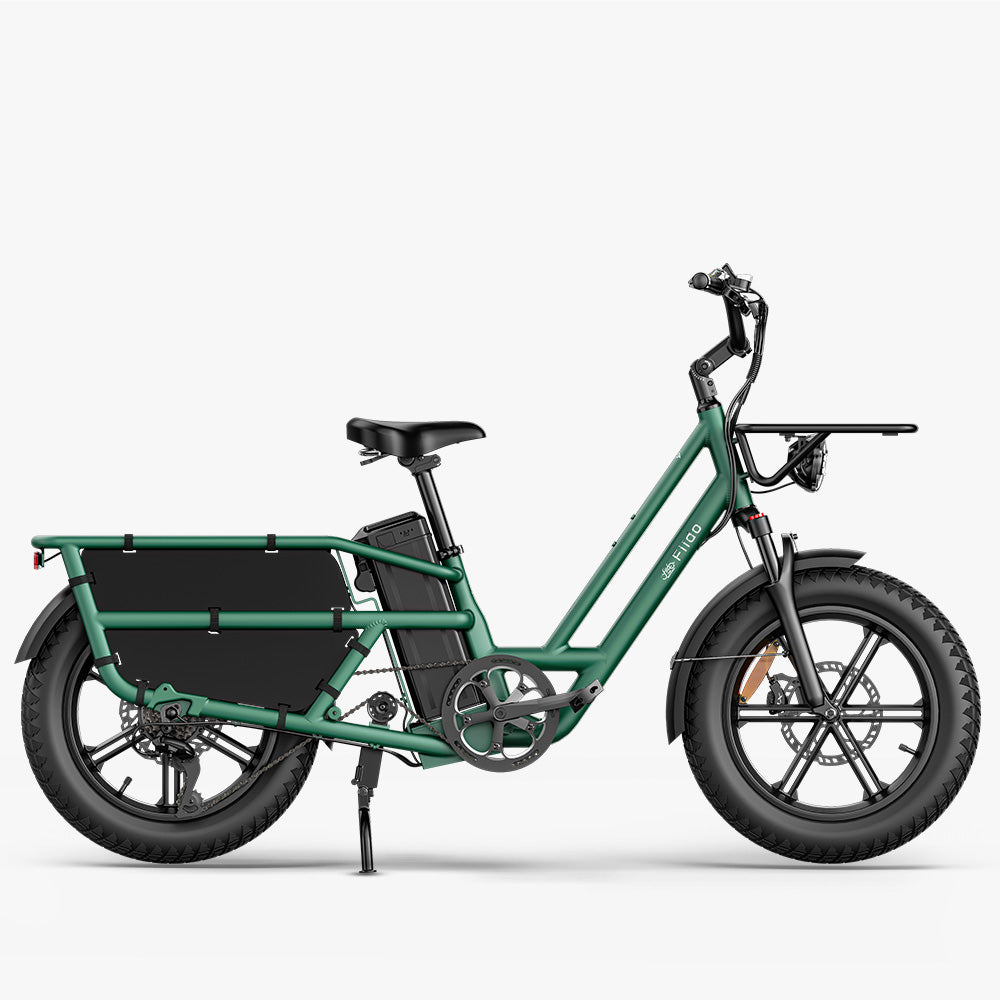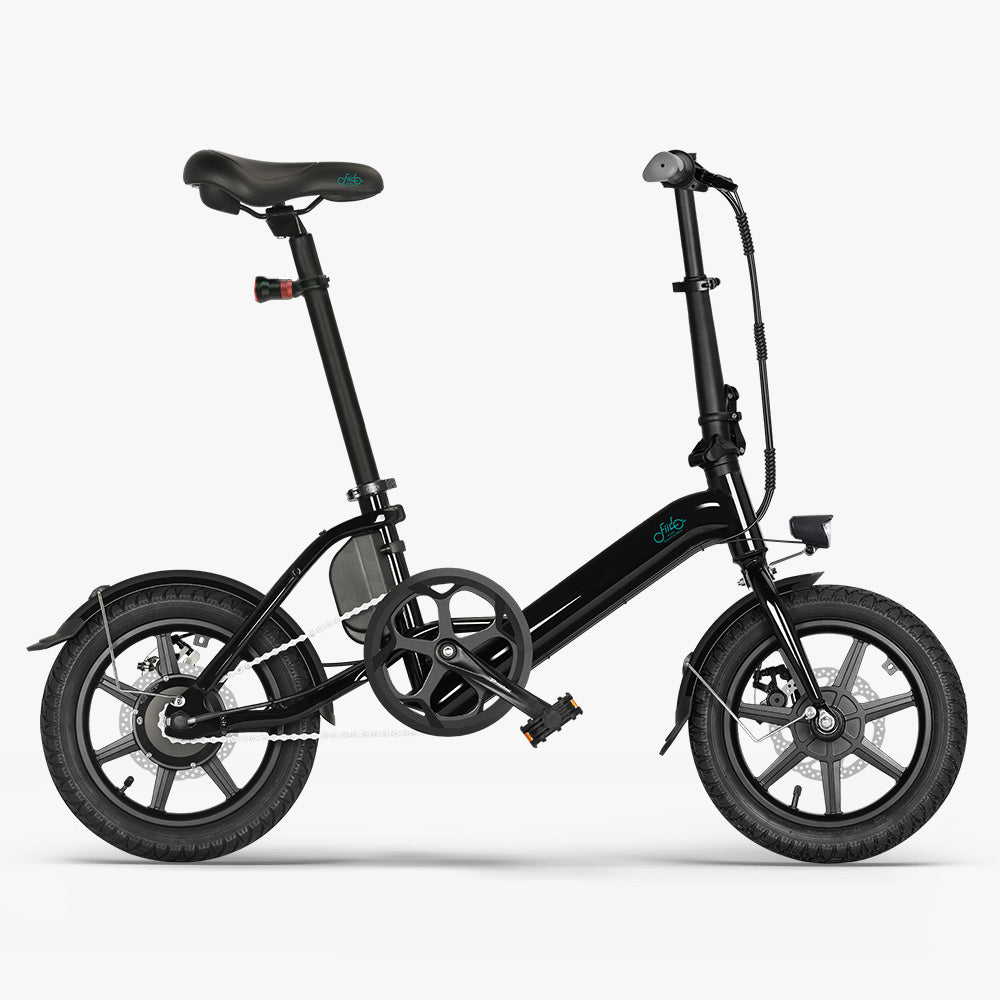"Mechanical disc brakes are simpler and easier to service, while hydraulic disc brakes provide more power with less effort."
— REI Co-op Technical Guide
On rainy roads or busy streets, the adaptability and stability of your disc brake system are key to your safety. This quote from REI highlights the core difference between the two most common e-bike braking systems—and understanding that difference is essential before you ride.
To find out which one is safer and better suited to your needs, keep reading this e-bike brake system comparison.

Introduction to Mechanical Disc Brakes on Electric Bikes
Working Principle:
The mechanical disc brakes work using steel cables. These cables push the brake pads into contact with the discs. Also, mechanical brakes are told to be single-piston.
Advantages:
- Cost-Effective:Mechanical disc brakes are relatively inexpensive, making them a budget-friendly option for you.
Even the high-end mechanical disc brakes would cost as little as $25 per end.
- Low Maintenance: These brakes have quite a simple structure. As a result, it's easy to adjust and repair, too. The best part is it doesn't require any bleeding.
- Better Control: Compared to rim brakes, mechanical disc brakes offer you reliable stopping power in a wide range of weather conditions, such as rain and mud.
- Versatile Performance: If you like to take frequent multi-day adventures in remote locations, the bombproof nature of these cable-actuated discs may also appeal to you.
Disadvantages:
- Hand Strength Required: They require more hand strength to operate, which still results in a relatively weaker braking force. As a result, it can be tiring on longer rides.
- Wear and Tear: The steel cables can slacken or wear out over time, reducing braking efficiency. Besides, mechanical disc brakes are not the self-centering type.
That means the pad wear needs to be accounted for by adjusting cable tension and recentering the pads somewhat like adjusting rim brakes.
Introduction to Hydraulic Disc Brakes for E-Bikes
Principle of Operation:
Hydraulic disc brakes usually use hydraulic fluid to transmit pressure. This fluid pushes the brake pads into contact with the discs. These discs are told to be of two-piston.
The consumers were quite pleased about Fiido's prompt attention and customer service.

Advantages:
- Stronger Braking Force: With hydraulic brakes, you'll have stronger and more consistent braking power and flexible and easy operation.
Off-road. cc also says, "Your finger input, modulation, and the feedback all would be far superior with hydraulic brakes compared to cable-actuated brakes."
- Self-Adjusting: These disc brakes are self-centering. With time, your e-bike's brake pads will wear down. However, the good thing about hydraulic disc brakes is that they will retain the same or a similar gap between the pad and the rotor. This feature ensures your consistent braking performance.
Disadvantages:
- Higher Cost: Hydraulic brakes are, on average, two to three times more expensive than mechanical disc brakes.
- Complex Maintenance: Requires seasonal maintenance, which adds to your costs. Also, need semi-regular bleeding to perform optimally.
E-Bike Brake Comparison: Mechanical vs Hydraulic Disc Brakes
Braking Power:
- Hydraulic Brakes: Offer much stronger and more consistent braking power.
- Mechanical Brakes: Less powerful, but the simplicity and reliability are deeply valued by off-road cyclists.
Maintenance:
- Mechanical Brakes: Easy to maintain with basic tools. Doesn't require bleeding.
- Hydraulic Brakes: Requires specialized tools and knowledge for maintenance. Needs semi-regular bleeding.
Price:
- Mechanical Brakes: Cost-effective, suitable if you are a budget-conscious cyclist.
- Hydraulic Brakes: Ideal if you prioritize performance despite the higher cost. Usually, it is two to three times more expensive.
Suitable Scenarios:
- Mechanical Brakes: Great for daily urban commuting.
- Hydraulic Brakes: These are especially better for off-road and high-speed riding, as they require more powerful braking. Shows it's worth on long and steep trails with great caliper piston count.

How to Choose the Right Brake System for Your Electric Bicycle
Consider Riding Needs
- City Commuting: The mechanical brakes are sufficient if they are used in urban environments.
- Off-Road Adventures: The hydraulic brakes have two pistons, which provide the necessary stopping power for rough and steep terrains. This makes them especially ideal for a fat tire electric bike, which is often used in off-road conditions where enhanced traction and reliable braking are crucial.
- Long-Distance Rides: Consider the terrain and braking needs before you decide on a specific one.
Budget and Maintenance Expectations
First, get a clear idea of your budget and willingness to handle the complexity of maintenance. Then, you may align your choice accordingly.
Mechanical disk is a one-time investment for the most part. On the other hand, the maintenance of hydraulic disk brakes will add to your monthly costs.
Riding Environment
Based on your specific usage scenario and needs in different terrains and conditions, read the specified details above and then decide accordingly.
E-Bike Brake Maintenance: Keep Your System in Top Shape
Once you’ve chosen the right brake system for your e-bike, maintaining it properly is essential to ensure safety and performance over time. Regardless of whether you're using mechanical or hydraulic disc brakes, regular maintenance helps extend the life of your components—especially the brake pads, which are the heart of your braking system.
Check and Replace Brake Pads Regularly
E-bike brake pads gradually wear down with use, and worn-out pads can significantly reduce your stopping power. As a rule of thumb, inspect your brake pads every few hundred kilometers, especially if you notice squeaking, weaker braking, or longer stopping distances. Mechanical brake pads typically need more frequent adjustments or replacements, while hydraulic systems often self-adjust—but still require pad replacements once the material gets too thin.
Clean the Rotors
Over time, dirt, oil, and debris can build up on your brake rotors, reducing friction and compromising braking performance. Use isopropyl alcohol and a clean cloth to wipe the rotors regularly, especially after riding in wet or muddy conditions.
Inspect Brake Levers and Cables (or Hoses)
For mechanical disc brakes, check the tension and condition of the cables. Frayed or stretched cables should be replaced promptly. For hydraulic brakes, inspect the hoses for any leaks and ensure that the fluid level is adequate. Bleeding the brakes periodically helps maintain responsiveness.
If your brakes start to feel soft or sluggish, you might want to read this in-depth guide on why your electric bike brake might not be responsive and how to fix it.
Listen for Warning Signs
Strange noises like grinding, squealing, or clicking are often early indicators that something in your brake system—usually the pads or rotor—needs attention.
By incorporating these simple checks into your routine, you’ll keep your e-bike’s braking system responsive, safe, and long-lasting. Proper brake maintenance isn’t just about performance—it’s about your safety on every ride. 🛠️ Need help maintaining your brakes? Contact Fiido Support: After-sale: support@fiido.com
Hydraulic Disc Brakes on an Fiido E-Bike
- Fiido Titan electric bike: Titan belongs to the Touring Ebike series. This beast is equipped with 4-piston high-performance hydraulic disc brakes. It's perfect for any rough off-road riding that requires powerful braking.
Fiido Titan Robust Cargo Electric Bike
A powerhouse with a 248-mile range and 4-piston brakes, ideal for hunting and fishing trips.
- Fiido T2 electric bike: This one also features the 4-piston hydraulic disc brakes but with 230mm rotors. Like Fiido Titan, it also has a three-finger brake lever with a power cut-off system.
Fiido T2 Longtail Cargo E-bike
Multifunctional, family-friendly cargo ebike with endless possibilities.
Recommended: Fiido D3 Pro – Best Ebike Under $1000 with Mechanical Disc Brakes
Looking for a compact e-bike with reliable braking and great value? The Fiido D3 Pro mini electric bike features mechanical disc brakes, a foldable frame, and up to 60 km of range—ideal for daily commuting.
With its sub-$1000 price, it stands out as the best ebike under 1000 for urban riders seeking simplicity, performance, and affordability.
Fiido D3 Pro Mini Electric Bike
The most affordable and adorable electric bike.
Final Verdict
So, here's the answer to - Mechanical vs Hydraulic Disc Brakes on an E-Bike: What's the Difference? The main differences between these two disc brakes lie in their immense braking power difference, maintenance complexity, and cost-effectiveness. Mechanical brakes are cost-effective and easy to maintain, making them ideal for urban riding. On the contrary, hydraulic brakes offer superior braking power and stability to your ride. And that is highly suitable for off-road and high-speed scenarios.
Still unsure which brake system suits your riding style? Contact us or explore our brake-equipped Fiido e-bikes now.
Frequently Asked Questions About E-Bike Brake Systems
1. How to tighten e-bike brakes?
If your e-bike brakes feel loose or less responsive, you can tighten them by adjusting the tension. For mechanical disc brakes, turn the barrel adjuster on the brake lever or caliper to increase cable tension. For hydraulic brakes, if the brake lever feels spongy, the system might need bleeding or topping up with brake fluid.
2. How to adjust e-bike brakes?
Adjustment depends on the type of brake. For mechanical brakes, you may need to realign the caliper, tighten or loosen the cable, and adjust pad spacing using the inboard and outboard pad screws. For hydraulic brakes, check that the calipers are centered over the rotor, and if not, loosen the mounting bolts, apply the brakes, and re-tighten while holding the lever.
3. How long do e-bike brake pads last?
The lifespan of e-bike brake pads depends on riding style, terrain, and weather. On average, pads last 1,000–3,000 km. Frequent downhill riding, heavy loads, or wet and muddy conditions can wear them out faster. It’s a good idea to inspect them every few hundred kilometers and replace them once the pad material is less than 1 mm thick.
4. How to adjust disc brakes on an e-bike?
To adjust disc brakes, first identify whether you have mechanical or hydraulic ones. For mechanical disc brakes, adjust the cable tension and reposition the brake caliper to avoid rotor rub. For hydraulic brakes, ensure the pads are aligned and consider bleeding the brakes if the lever pull feels too long.
5. How to change brake pads on an e-bike?
To replace brake pads, remove the wheel, then take out the old pads from the caliper—usually by removing a pin or clip. Insert the new pads carefully, making sure not to touch the braking surface with your fingers. Once installed, pump the brake lever a few times to reset the pad position, and bed in the pads by riding at low speed and braking gradually.
















